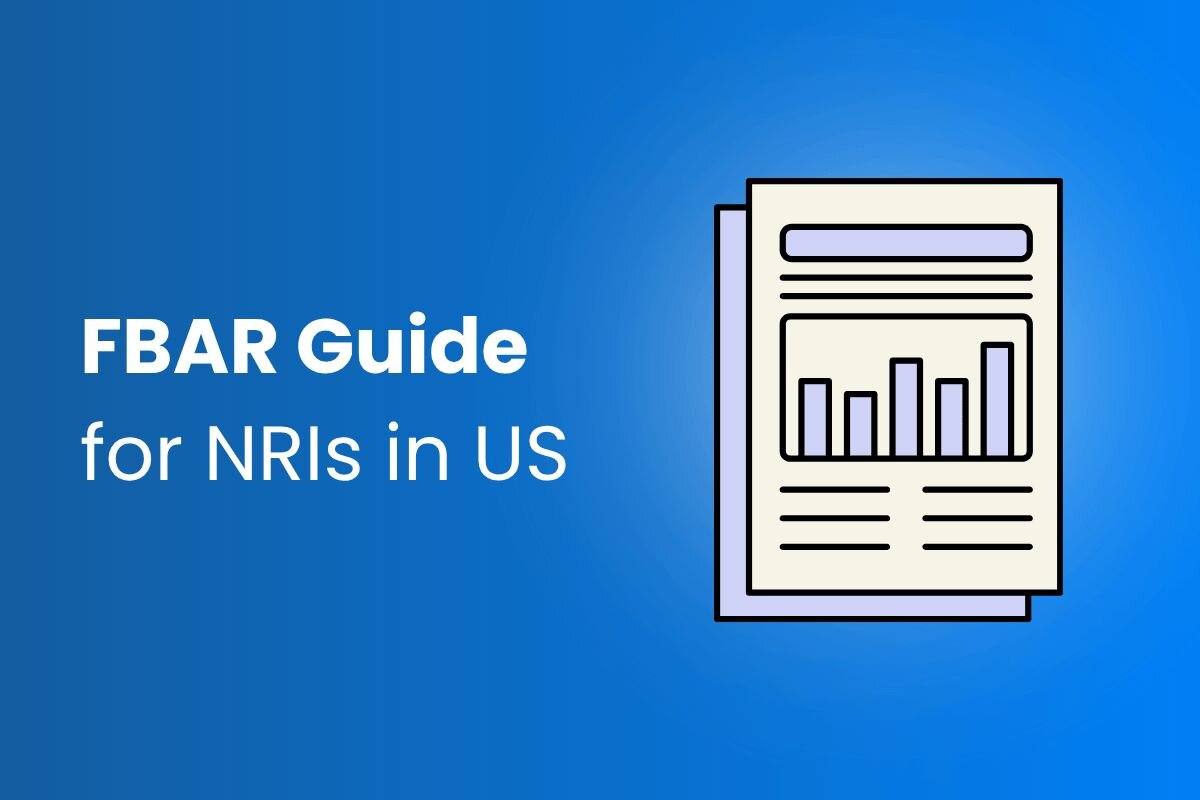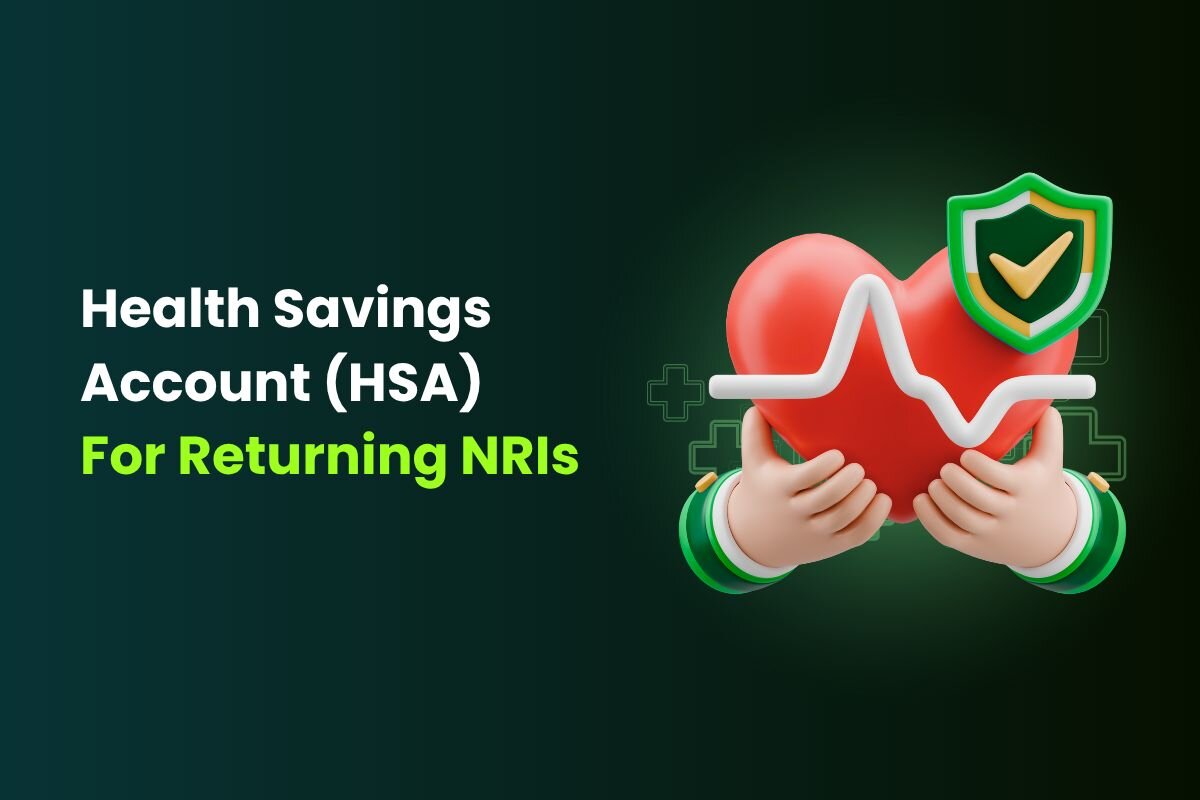Managing money across borders isn’t just about transferring funds between your home country and where you work. For most NRIs, it’s a complex web of tax rules, exchange rates, compliance forms, and financial goals that live in two different time zones.
You might be earning in dollars, investing in rupees, saving for retirement in both countries, and sending money to family every month. Without a structured plan, it’s easy to lose track of where your wealth really stands - or worse, pay more in taxes than you should.
The good news? With the right approach, clear understanding of rules, and the use of digital tools like InvestMates, you can manage your cross-border finances seamlessly. Whether it’s tracking your U.S. portfolio, filing NRI taxes, or planning repatriations, you can now bring it all together in one place.
If you’re just starting your NRI journey, our guide on Who Is an NRI is a good place to begin - it explains residency status and how it affects your tax and investment decisions.
Key Takeaway
- Cross-border financial planning helps you coordinate income, investments, and taxes across multiple countries.
- Lack of planning can lead to double taxation, missed compliance filings, and poor visibility of your true net worth.
- Understanding remittance and tax rules under FEMA, LRS, and DTAA is essential for sending and receiving money safely.
- Technology makes it easier: platforms like InvestMates let you link your global accounts, track assets, and stay compliant automatically.
- The goal isn’t just compliance - it’s clarity. When you can see your full financial picture, you make smarter decisions for your future in both countries.
Common Challenges NRIs Face
If you’re an NRI, you already know that managing finances across countries isn’t as simple as keeping two bank accounts. The moment you start earning abroad, every decision - where to save, invest, or send money - comes with a rulebook of its own.
Here are the most common challenges NRIs face while managing cross-border money:
1. Juggling Multiple Bank and Investment Accounts
Most NRIs maintain several accounts - a salary account abroad, NRE/NRO accounts in India, maybe even an FCNR deposit. Without a system to track them, it’s easy to lose visibility.
👉 You can read more about the differences between NRE, NRO, and FCNR accounts to understand which suits your goals.
2. Tax Confusion and Double Taxation
Tax rules differ in every country. You might be taxed where you earn and again where you remit or invest. That’s where the Double Taxation Avoidance Agreement (DTAA) helps - it prevents you from paying tax on the same income twice. But without proper documentation and timely filing, it’s easy to miss those benefits.
3. Exchange Rate and Currency Risk
Your savings may look stable in one currency but lose value when converted. Even a small INR–USD fluctuation can impact your investment returns or remittance value. Regular tracking and rebalancing are key.
4. Complex Compliance and Documentation
Between FATCA, FBAR, and FEMA, NRIs must report global assets and transactions across jurisdictions. Missing a filing can lead to penalties. If you haven’t yet, check out our guide on How to File NRI Taxes - it walks you through the step-by-step process.
5. Repatriation and Fund Movement Challenges
Transferring funds between countries isn’t always straightforward. You must comply with RBI and FEMA rules for sending or bringing money home. Here’s a detailed guide on NRI Repatriation of Funds to help you understand the limits and documentation required.
6. Lack of a Unified Financial View
You might have a brokerage account in the U.S., mutual funds in India, and property under your name - yet, no single platform shows your entire wealth picture. That’s exactly what InvestMates solves: it connects your U.S. and Indian assets into one dashboard, giving you clarity over your global net worth and helping you stay compliant automatically.
Understanding Cross-Border Financial Planning
Cross-border financial planning means designing a strategy that aligns your global income, assets, and taxes - no matter where you live or earn. It’s about managing your wealth as one connected picture, not as scattered pieces in different countries.
As an NRI, your financial life likely spans two or more jurisdictions. You might earn in the U.S., invest in Indian mutual funds, hold property in Mumbai, and save for retirement in both countries. Without a coordinated plan, you risk losing money to double taxation, poor currency timing, or unbalanced portfolios.
What Cross-Border Planning Involves
Coordinating global income and investments
You need to track your salary, capital gains, and dividends across countries while staying compliant with both tax systems.
If you invest in India, our article on NRI Investment Options in India can help you explore where to start.
Avoiding Double Taxation
The DTAA (Double Taxation Avoidance Agreement) allows you to claim credit for taxes paid abroad. But you must maintain proper documentation - Form 67, foreign tax credit details, and proof of payment - to use this benefit effectively.
Balancing Currency Risk
Holding assets in multiple currencies (like USD and INR) exposes you to exchange rate fluctuations. Regular reviews help you decide when to repatriate funds or keep them abroad.
Estate and Retirement Planning Across Borders
Your wills, insurance, and retirement accounts need to comply with local laws in each country. You can learn more about long-term planning in our detailed guide on NRI Retirement Planning.
Aligning Goals with Residency Changes
If you plan to return to India in the future, your tax status, investment rules, and account structure will all change. Reading our guide on NRI Return to India Planning can help you prepare early.
Why It Matters
Cross-border financial planning isn’t just about saving taxes - it’s about building financial clarity. When your global finances are structured properly, you know exactly what you own, where it’s invested, and how it grows.
How to Manage Your Cross-Border Money Effectively
Once you understand the challenges and rules, the next step is to organize your money so it works efficiently across both countries. Managing cross-border finances is about finding balance - between growth, liquidity, and compliance.
Here’s how you can manage your global money effectively:
1. Centralize Your Finances
Start by linking all your accounts - U.S. brokerage, Indian bank accounts, property investments, and credit cards - into one dashboard. This helps you see your complete net worth at a glance.
A tool like InvestMates can automate this, connecting both U.S. and Indian institutions so you don’t have to track things manually.
2. Stay Tax-Compliant in Both Countries
Every country taxes differently. The U.S. taxes citizens and residents on global income, while India taxes based on residency.
- Use the DTAA to avoid double taxation.
- File returns in both countries accurately using resources like our How to File NRI Tax guide.
- Keep digital records of Form 67, W-2s, 1099s, and Indian Form 16 for smoother compliance.
3. Use Remittance Limits Wisely
The Liberalised Remittance Scheme (LRS) allows you to send up to USD 250,000 per year from India for approved purposes like investments, education, or family support.
For inward transfers from the U.S., follow RBI and FEMA guidelines - our article on Sending Money from USA to India explains it step by step.
4. Diversify with Intention
Avoid concentrating all your assets in one country.
- Keep emergency funds in the country you live in.
- Maintain long-term investments in India for better post-tax returns.
- Balance equity and debt across markets to reduce currency exposure.
- If you’re exploring options, check our guide on How NRIs Can Invest in Indian Mutual Funds.
5. Plan for Currency Movements
Exchange rate fluctuations between INR and USD can affect your real returns. Review currency trends before remitting or repatriating.
You can also hedge by holding a mix of assets in both currencies - for example, a U.S. ETF and an Indian mutual fund.
6. Revisit Your Plan Regularly
Your financial situation changes as you move countries, get promoted, or plan a return. Re-evaluate your tax residency, investment mix, and compliance needs every year.
If a return to India is on the horizon, our NRI Return to India Planning guide walks you through the financial transition.
7. Let Technology Do the Heavy Lifting
Manually tracking cross-border accounts is error-prone. A digital wealth platform like InvestMates helps you:
- Link all your U.S. and Indian accounts
- Get AI-powered portfolio insights
- Track currency-adjusted returns
- Stay on top of tax obligations automatically
With these steps, you’ll spend less time managing money and more time growing it.
NRI Money Transfer Rules You Should Know
Transferring money between countries might seem routine, but every cross-border movement has to follow specific rules set by the Reserve Bank of India (RBI) and the Foreign Exchange Management Act (FEMA). Understanding these ensures your transfers remain smooth, compliant, and tax-efficient.
1. The Liberalised Remittance Scheme (LRS)
Under the LRS, resident Indians can remit up to USD 250,000 per financial year for purposes such as:
- Investments abroad
- Education or medical expenses
- Maintenance of relatives
- Property purchases or travel
If you send money from India to another country, the transaction falls under this cap. When you’re transferring money to India from abroad, different FEMA rules apply - our detailed post on Sending Money from the USA to India explains that process.
2. FEMA Guidelines for NRIs
FEMA distinguishes between repatriable (freely transferable) and non-repatriable funds.
- NRE and FCNR accounts hold repatriable funds.
- NRO accounts hold income earned in India and are subject to repatriation limits.
- If you’re unsure which account type suits you, see our comparison of NRE vs NRO vs FCNR Accounts.
3. Documentation and KYC Requirements
To transfer funds abroad, banks generally require:
- PAN card
- Purpose code (for RBI reporting)
- Source of funds proof
- Form 15CA/15CB (for certain outward remittances)
Having these ready speeds up processing and helps you avoid last-minute compliance issues.
4. Tax Collected at Source (TCS) on Outward Remittance
Starting from recent budget changes, a TCS is levied on outward remittances beyond certain thresholds.
- Up to ₹7 lakh: No TCS
- Above ₹7 lakh: TCS may apply, varying by purpose (investment, travel, education, etc.)
- You can claim a refund or adjustment when filing your income tax return. For more on tax treatment, visit our guide on Tax on Capital Gains for NRIs.
5. Receiving Money in India
When you receive money from abroad, it’s generally tax-free if it comes from close relatives and is routed through proper banking channels. However, investment or property-related transfers could have tax implications under Indian law. Our article on NRI Repatriation of Funds explains how to bring money back safely.
6. Keeping Track with Technology
Managing cross-border transfers is easier when everything is visible in one place.
With InvestMates, you can:
- Track incoming and outgoing remittances
- Monitor currency-adjusted balances
- Stay notified about tax or limit thresholds
By following these rules and using digital tools, you can make your global money movement simple, compliant, and transparent.
Tax on Sending Money Abroad from India
If you plan to send money abroad - whether for investments, education, or family expenses - it’s important to understand how the tax rules work. The government tracks and taxes certain outward remittances under the Liberalised Remittance Scheme (LRS), and the Tax Collected at Source (TCS) applies depending on the amount and purpose.
1. What Is TCS on Foreign Remittance?
Tax Collected at Source (TCS) is a small percentage collected by banks when you transfer money abroad under LRS.
The TCS amount isn’t an extra tax - it’s an advance tax credit that you can adjust later while filing your income tax return in India.
The TCS you pay is credited to your PAN and can be adjusted while filing your return - it’s not a permanent cost.
If you’re looking to invest abroad, be sure to understand how NRI Investment Options in India and your foreign holdings interact from a tax standpoint.
2. When You Don’t Need to Pay TCS
TCS doesn’t apply if:
- You’re sending money from an NRE or FCNR account, as these hold foreign earnings.
- The remittance is below ₹7 lakh in a financial year.
- You’re making a foreign remittance for business purposes (not under LRS).
Always verify with your bank before initiating a large transfer.
3. Claiming Credit for TCS
When filing your Indian tax return, include the TCS amount under “Taxes Paid.” The amount will automatically appear in your Form 26AS or Annual Information Statement (AIS). You can adjust it against your tax liability or claim a refund if it exceeds what you owe.
If you’re unsure how to report this while filing, our article on How to File NRI Tax Returns provides a simple step-by-step approach.
4. Reporting and Compliance
Any outward transfer must comply with FEMA and RBI guidelines. Banks file regular reports to the RBI, so always disclose the correct purpose code. Misreporting can delay remittances or trigger tax scrutiny.
How Technology Simplifies Cross-Border Wealth Management
Managing finances across two or more countries used to mean endless spreadsheets, late-night calls with advisors, and manual tracking of exchange rates. Today, technology has changed that completely.
With digital platforms and AI-powered tools, you can now link your global accounts, track investments, and stay compliant - all from your phone.
1. One View of Your Global Finances
Most NRIs hold accounts across countries - salary in the U.S., property in India, and investments in both. Manually tracking them can lead to errors or missed updates.
Platforms like InvestMates connect your Indian and U.S. accounts securely, giving you a unified view of:
- Total net worth
- Linked assets and liabilities
- Real-time currency-adjusted returns
- Cash flows and portfolio distribution
This helps you see how your money is performing globally, not just locally.
2. Automated Tax and Compliance Insights
Cross-border finance comes with multiple tax reporting requirements - FATCA, FBAR, DTAA, and more. Instead of juggling forms and spreadsheets, modern tools automatically detect compliance triggers and surface insights that help you file accurately.
If you’re unfamiliar with these terms, our guides on DTAA and How to File NRI Taxes explain them in plain language.
3. Smarter Investment Tracking
Digital platforms make it easy to compare your U.S. and Indian portfolios side by side. You can track:
- Returns after currency conversion
- Tax efficiency of each asset
- Diversification across geographies
- Sector and risk exposure
By automating this process, you save time and reduce the chance of costly mistakes.
4. Simplified Money Movement
When linked with your NRE/NRO accounts and U.S. banks, platforms can help automate remittance tracking and flag transactions approaching LRS or FEMA limits. You’ll know exactly when you’re nearing annual thresholds or when TCS might apply.
To understand these rules in depth, see our article on NRI Money Transfer Rules.
5. Financial Planning with AI Assistance
AI tools are now capable of analyzing your spending, investments, and tax data to suggest actionable insights - when to repatriate funds, how to rebalance your portfolio, or where to optimize for taxes.
With InvestMates, these insights come built-in. You don’t need to be an expert - the platform’s AI assistant, Otto, acts as your personal financial guide, helping you manage cross-border wealth intelligently.
Technology doesn’t replace human judgment - it amplifies it. The right digital setup lets you make faster, data-driven decisions while keeping your financial life organized across borders.
Smart Practices for Long-Term Cross-Border Planning
Managing cross-border finances isn’t a one-time task - it’s an ongoing process that changes as your career, location, and life goals evolve. Building habits that keep your financial life organized will help you grow and protect your wealth across borders.
1. Review and Rebalance Regularly
Revisit your portfolio at least once a year. Currency shifts, new tax treaties, or market movements can change your real returns. Rebalancing helps you stay aligned with your goals instead of reacting to short-term trends.
2. Keep Your Documents in Order
Maintain digital copies of all major records - tax filings, bank statements, investment proofs, and remittance details. It saves hours when you file returns or move funds between countries.
If you’re unsure about the documentation required for fund movement, check our guide on NRI Repatriation of Funds.
3. Stay Updated on Regulatory Changes
Rules under FEMA, RBI, and the Income Tax Act change frequently. Subscribe to official updates or trusted NRI resources. Even a small tweak, such as a new TCS threshold, can affect your remittance plan.
4. Plan Ahead for Your Return to India
Many NRIs plan to move back eventually. Shifting residency changes how your income and investments are taxed. Prepare in advance - restructure your accounts, re-evaluate property holdings, and review insurance.
Our article on NRI Return to India Planning outlines what to do before making the move.
5. Integrate Retirement and Estate Planning
Think beyond current income - include retirement accounts, pension plans, and succession documents in both countries. Cross-border estate planning avoids disputes and ensures smoother asset transfer.
You can read more in our detailed guide on NRI Retirement Planning.
6. Use Digital Tools for Ongoing Oversight
Instead of managing multiple logins and statements, use a unified dashboard like InvestMates to:
- Track both Indian and international investments
- Monitor compliance alerts (FATCA, FBAR, DTAA)
- Receive AI insights on rebalancing or tax optimization
These small habits compound into better control, fewer surprises, and more consistent wealth growth over time.
Conclusion
Managing money across borders can feel complicated - two tax systems, multiple currencies, and scattered accounts pulling in different directions. But it doesn’t have to stay that way.
Once you understand the rules, build the right structure, and use tools that bring everything together, cross-border wealth management becomes surprisingly simple. You can grow your investments abroad, stay compliant in India, and plan your long-term goals with confidence.
For NRIs, the key is visibility and integration - knowing where your money is, how it moves, and what it’s worth globally.
About the Author

By Prakash
CEO & Founder of InvestMates
Prakash is the CEO & Founder of InvestMates, a digital wealth management platform built for the global Indian community. With leadership experience at Microsoft, HCL, and Accenture across multiple countries, he witnessed firsthand challenges of managing cross-border wealth. Drawing from his expertise in engineering, product management, and business leadership, Prakash founded InvestMates to democratize financial planning and make professional wealth management accessible, affordable, and transparent for every global Indian.




